#creole architecture
Text

Coliseum Square
New Orleans
Source
#aesthetic#architecture#new orleans#louisiana#cityscape#tropical#creole architecture#landscape#live oaks#garden district
36 notes
·
View notes
Photo


This 1850 home in Americus, Georgia has so much to see. It’s built in the Louisiana French or "Creole" style, and it’s gorgeous. ($660k)
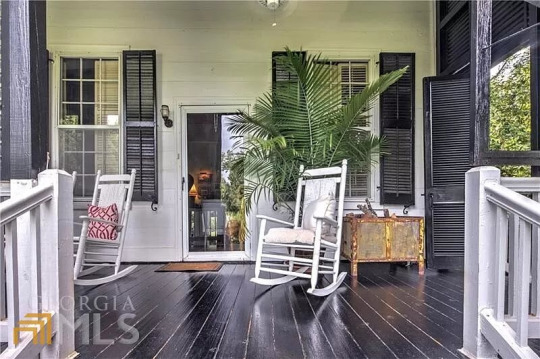

Isn’t this a beautiful big porch?


The interior is just stunning. That wall of books has a door in it, which isn’t something you see that often.

A 2nd sitting room is just as beautiful.
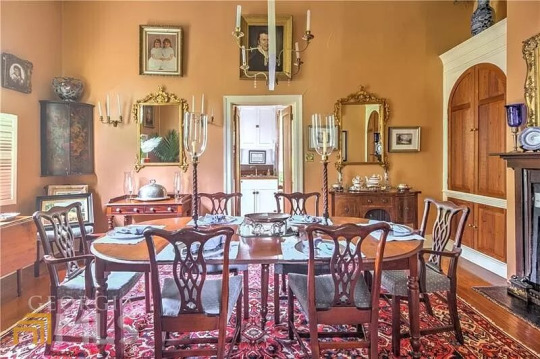
It has a lovely big formal dining room.



The kitchen is galley style, but it’s very long with lots of features. I think that’s a small sink for washing veggies, and it also has two large professional stoves.

This bedroom- look at the bookshelves. It even has a little library ladder.

Upstairs is this classy office.
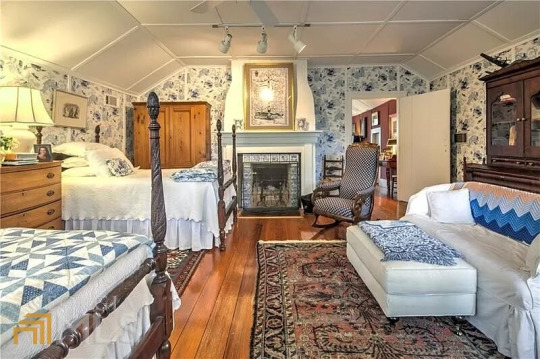
And this fabulous bedroom.


Outside by the pool is a guest house.
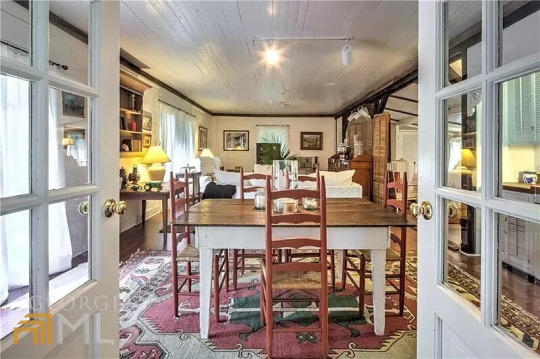
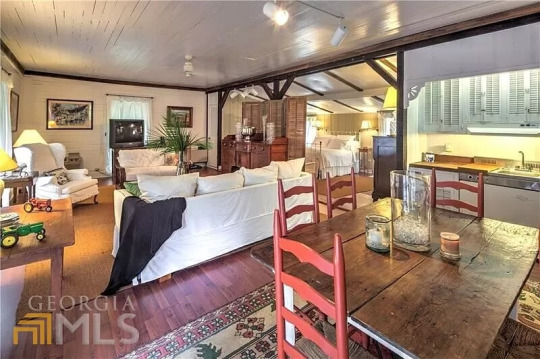
The guest house is so pretty, too. It’s like a big open studio apt.

But, that’s not all- there’s also this guest house.
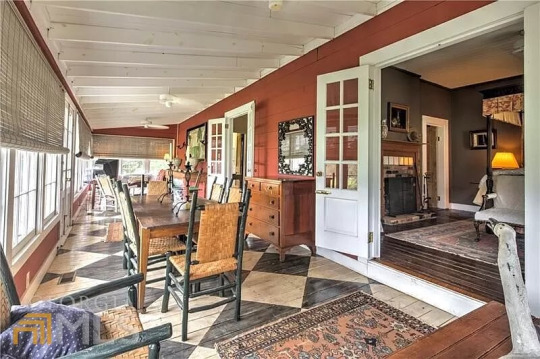

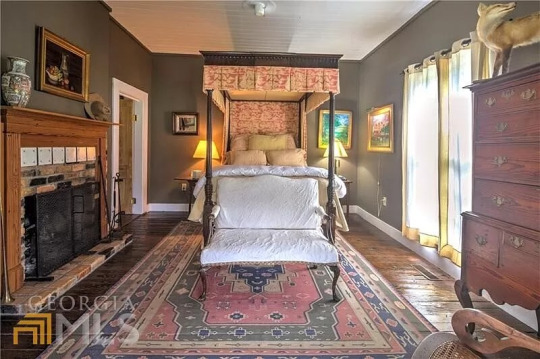
This one is even larger.
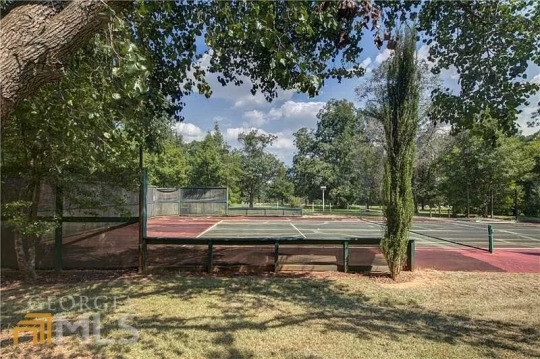
Then there are the tennis courts.

The property is magnificent- all 39.36 acres.


It’s really a stunning property that I would expect to cost over $1m.
https://www.zillow.com/homedetails/523-Us-Highway-19-S-Americus-GA-31719/105388147_zpid/
122 notes
·
View notes
Photo

"Sweeping front porches, turrets, cast-iron balconies, colonnades- 30-foot columns, gloriously beautiful- double-pitched roofs, all the architecture of the whole wide world and it doesn't move... In New Orleans, you could almost see other dimensions. There's only one day at a time here, then it's tonight and then tomorrow will be today again." --Bob Dylan
44 notes
·
View notes
Text
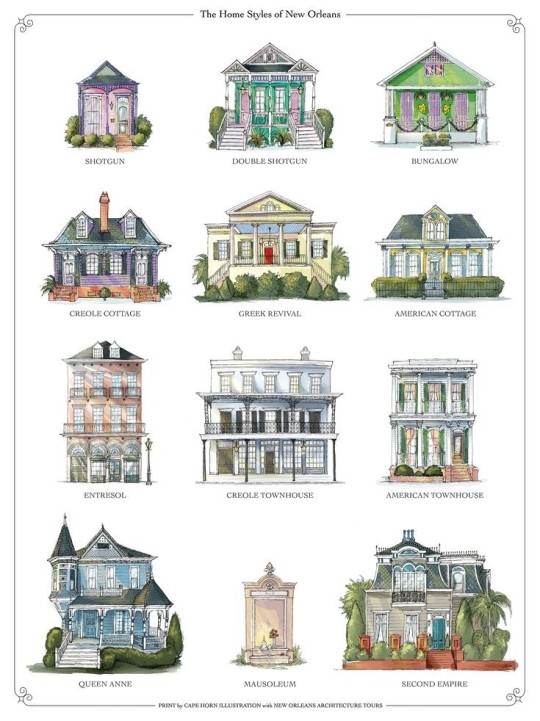
#studyblr#literature#poetry#studywithme#books & libraries#sociology#poets on tumblr#study motivation#creole#creole cottage#architecture#new orleans
35 notes
·
View notes
Photo

CASA CHAVIER \\ PONCE \\ FRANCISCO PORRATA DORIA
#ponce creole style#puerto rican architecture#francisco porrata doria#ponce#casa chavier#obsessions#architecture#puerto rico
4 notes
·
View notes
Text

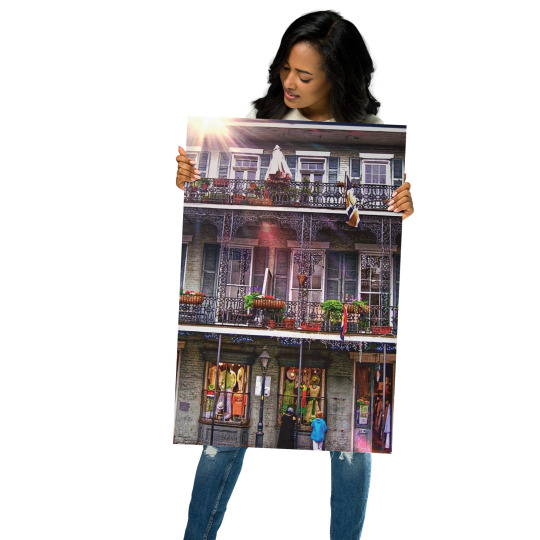


New Orleans French Quarter Architecture Print
#new orleans#nola#louisiana#french quarter#neworleans#cajun#creole#mardi gras#saints#baton rouge#christmas#holidays#festive#presents#december#winter#architecture#portrait#wedding#swifties
1 note
·
View note
Photo
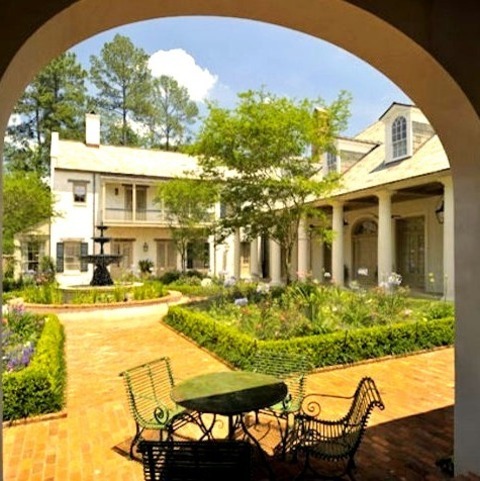
Container Garden - Patio
Large traditional courtyard stone patio container garden idea for the patio
0 notes
Text
Embark on a journey through time.
All expanses paid.
You step into the time machine and set it for the year 1845 and the place is the bustling city of New Orleans. As the machine whirs and hums, the world around you begins to blur and twist until you suddenly find yourself standing in the middle of the city’s famed French Quarter. The sights and sounds around you are overwhelming, with brightly colored buildings and narrow cobblestone streets…

View On WordPress
#adventure#AfricanAmericans#architecture#chicorycoffee#Creole#Culture#enslavedpeople#entrancing#food#FrenchQuarter#gumbo#History#kindness#NewOrleans#onceinalifetime#overwhelming#plantationowners#sightsandsounds#streetvendors#TimeMachine#travel
0 notes
Text

#plantesetinterieurs#plantes#architecture#diy#home & lifestyle#home decor#interiors#nature#wildlife#planter#guadeloupe#antilles#caribbean#west indies#french creole#french#france#plant aesthetic#plant photography#tree#plant parent#seeds#grass#furniture#artisanal#artisanat#kim kashkashian#beyonce#rihanna#super show
1 note
·
View note
Text
me: I looove New Orleans architecture, it's so intricate and beautiful and unique, I'm so happy to be surrounded by it
me the second I have to draw fencing on a creole townhouse:

3 notes
·
View notes
Text

Vieux Carré
New Orleans
#aesthetic#architecture#new orleans#louisiana#cityscape#tropical#creole architecture#french quarter#wr
564 notes
·
View notes
Text

The History of New Bordeaux
Situated just a few miles north of New Orleans, Louisiana, “Bourbon City” is home to a unique blend of cultures, night life, history, and music, as well as being one of the busiest ports in the Gulf of Mexico, alongside its sister city. Founded by the French, ruled by Spanish forces for roughly 40 years then purchased as part of 1803’s Louisiana Purchase, New Bordeaux hosts a unique blend of Creole and Latin American cultures and vibrant (though tumultuous) history. The city has always been trapped in a power struggle between countless groups, but despite issues both social (poverty, crime rates, racial strife) and natural (slowly sinking land, hurricanes, floods), New Bordeaux persists as a testament to human will.
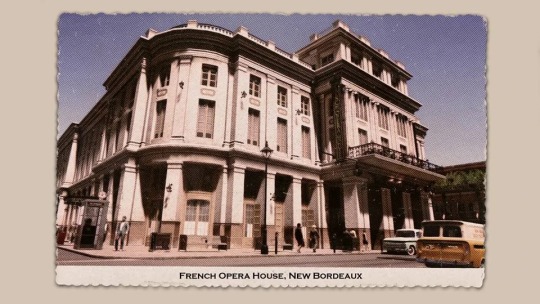
France & Sister City
The first residents of what would become New Bordeaux were Native American nations— Chitimacha, Coushatta, Tunica-Biloxi, amongst many other nations— though following the French exploration during the 1600-1700s (not including De Soto of the 1540s), most indigenous nations had been pushed away from the mouth of the Mississippi River. It was Bienville of France who established the first main settler colonies in the late 1710s, alongside New Bordeaux (which was just considered an outer territory of Nouvelle-Orléans). The city was officially established in 1718, though the original name has been lost to time as different areas called the city different names. Many historians have coined this as the “Proto-Bordeaux” period.
During this time, numerous groups lived in the territory, including: French settlers, formerly enslaved people (typically from the English colonies though not always) as well as free Black people, a few Latin American groups (primarily what is now known as the Dominican Republic and Cuba— note that the surge in this population would occur mostly during the Spanish Trials), and a few natives who had not been successfully pushed out of the region.
Spanish Trials to Louisiana Purchase
While New Orleans fell to Spanish power in 1763, Proto-Bordeaux navigated Spanish influence by avoiding interaction beyond trade. Though they did eventually “fall” into Spanish rule, it took two years for a semi-peaceful transition of power to occur. Under Spanish rule (though not nearly as strong as Spain’s grip on NOLA), Proto-Bordeaux now legally had a class of free People of Color (whereas beforehand it was a disputed but mostly accepted rule) and traded heavily with Cuba, Mexico, and other Latin American countries. The strong Catholic influence showed through the city’s architecture and art despite the Spanish not being extremely active in the city.
In 1796, Proto-Bordeaux faced the “Spanish Trials”, which was an attempt by the Spanish ruling class to unite the areas in hopes of economic gains and control. Countless people were put on trial as “insurrectionists” for disagreeing or speaking out against unification— the records however seem to indicate that most of these people who were put on trial were in fact not speaking out against unification but rather the injustices they faced from other groups in the city. The city would eventually tear itself apart in 1798 before a tentative reunification under brief French rule, thus ending the “Proto-Bordeaux” period.
In 1803, Louisianan territory reverted back to French rule but was sold quickly after by Napoleon in order to gain money to fund his war(s) in Europe. New Bordeaux became a wealthy port city for the United States.
Pre-Civil War
Alongside its sister city, New Bordeaux’s ports sailed raw materials and products to the Caribbean, South America, and Europe. Thousands of enslaved people were sold in its markets, but its free Black community thrived. Until the 1830s, the majority of its residents still spoke French or a local dialect that combined Spanish, French, and Native American languages. New Bordeaux notably had (and still has) a slightly different accent from New Orleans.
During the War of 1812, there was a small battle against British forces, and despite the smaller numbers, New Bordeaux’s citizens won and were able to push the British a bit more south.
Crime organizations from each neighborhood/area began to show up around this time, though it was sporadic— between pirates, smugglers, ethnic crime groups, and other groups, no one held much influence over the underbelly of the city. It was also during this time of crime that a very early form of what would come to be known as the Southern Union and Dixie Mob, respectively, would kidnap freed Black people and sell them to the highest bidder, usually the French or Spanish ruling classes on the ritzier ends of the city. It would be Reconstruction before either gained any significant power.
During Civil War
The Civil War was the largest turning point for NB, alongside New Orleans. Unlike NOLA, the residents were split between Confederate support and Union support, which led to the city more or less destroying itself (again) until a few families— the Harless family and Duvall family most notably— united the city under the Confederate flag. Even when NOLA fell to Union control, the Confederate force of NB attempted to fight back Union troops to no avail.
The Battle of New Bordeaux in August of 1862 (just a few months after New Orleans fell in April) lasted 3 days and ended when General Duvall was killed on field and most of the Confederate troops either fled or surrendered to the Union. The Union’s control of the city marked the second destruction and the end to the first era of New Bordeaux.
Reconstruction
Reconstruction was a turbulent time, especially for New Bordeaux, as the city had entered a new age of tense unification that no one seemed to have wanted. Sharecropping on old plantations in Frisco Fields area was not uncommon, though most free Black people were regulated to poverty with no conceivable way out, even with the aid of the US military. It didn’t take long for former Confederates to fight against every freedom given to the (already freed, for the large part) Black people of NB, to the point that Reconstruction was considered and early failure there. NOLA remained a powerful port, as NB’s older plantations started to fade away into the age of antiquity. However, their port remained mostly intact, and trade became a crutch as the city attempted to heal its internal wounds.
During Reconstruction, Confederate sympathizers and countless KKK-satellite organizations such as Dixie Mob and (more importantly) the Southern Union would seep into the city’s very fabric, alongside the numerous People of Color who already resided there. The United States government continually had a military presence stationed by the ports just in case the city attempted to destroy itself again despite the general failure of Reconstruction. (This would later contribute to the CIA presence in the city, but that would not be until the 40s with the OSS then later the CIA in the 50s.)
During this time, a few cults— most notably the Ensanglante— began to pop up as Confederate sympathizers looked for any and all excuses for their losses during the war. The notion of “the Filth” was in part inspired from Mormon doctrine, and much like Mormonism, focused on white American Imperialism and superiority over everything on Earth. The movements remained an upper-class cult, with the lower classes being “implemented” in the early part of the 20th century.

Early 20th Century
New Bordeaux, once again, began to rebuild its city. In the 1880s, Haitian and Italian immigrants appeared in droves, and by 1910, they were a part of the fabric of the city. Dominican and Cuban influences were already present but it began to show more in the city’s budding night life.
Compared to NOLA’s jazz, NB had more emphasis on dancing and blending together stringed instruments with the brass typical with jazz. Cello, violin, piano, trumpet, trombone, and drums were staples of New Bordeaux jazz, alongside Latin American-influenced dancing (mostly Dominican and Cuban). The Harlem Renaissance of New York influenced art and poetry from the Black community of NB and reinvigorated hope for freedom like what was seen during French-Spanish rule. Drinking also became a staple, and due to the pre-existing smuggling rings from pre-Reconstruction, 1920s’ Prohibition meant barely anything to the citizens. Numerous gangs also rose to prominence in the 20s, including the Italian-American mafia.
The Rule of Sal Marcano
Starting in the late 1800s, smaller crime organizations in different regions of the city had begun to crop up, though it would be until the late-1930s before many (beyond the Italian-American mafia) were able to seize any sizeable power. In the 20s, bootlegging using the underground tunnels was mostly blended between gangs (before Burke showing up), and areas like Delray Hollow (eventually being taken over by Samuel Robinson) and Barclay Mills (Enzo Conti’s area) each had its own crime situation. That all ended after Sal Marcano and his brothers forcibly took over NB’s crime underbelly.
Following the brutal murder of Giuseppe Carrillo (which is known as All Saints’ Day Massacre) under the guise of revenge— Sal had set his father up to be killed over gambling debts then accuse Carrillo of being merciless— the Marcano Family was established and took over all of the city’s rackets. It would be the late 1930s when Sal gained power in Cuba through casinos and ports, which brought in enough money to take the partially-crumbling city into a potential tourist attraction.
Sal was both a blessing and a curse to the city, bringing in more revenue than ever seen before from ports, colleges (which would now be considered STEM-centered), alcohol, weapon smuggling, underground gambling, and more. But, it seemed only to make the rich man richer and the poor man poorer.
Beyond the rule of Marcano, bluegrass and very early rock began (or, began to surge in popularity) in areas such as Delray Hollow, which produced 3 blues legends of the 1930s*.
Mid-Century
The 40s saw a large surge in nationalism in the city, as well as campaigns like Double-V that contributed to a large population of Black people from NB enlisting. Records show that roughly 15% of Black men from the city (who weren’t drafted) enlisted in the war. However, despite their best efforts, the racism back home only got worse thanks to people like Remy Duvall and the Southern Union. It wasn’t all bad however— Delray Hollow began to have more business, and a few social programs were established to help returning veterans gain some amount of education following their time in World War II.
Crime wise, Sal controlled most of the crime scene in the late 40s or otherwise coerced (or intimidated) their leaders into joining him— which is how Enzo Conti rose through the ranks, and Samuel “Sammy” Robinson (who was already head of the Black Mob) gained more influence. It was in the 1950s that the Haitian gang began to form and cause troubles for the Black Mob, following a large influx of immigrants due to political strife and violence back home.
In the 1950s, the town flourished. The night life and local attractions brought in thousands of tourists every year, due in part to the marketing from Lou Marcano, and the Marcano Family had a successful grip on both the police force and crime scene. But no amount of tourism or revenue could save a city so divided.
Following Executive Order 9981 in 1948, then Brown V Board of Education in 1954, protests struck all across the city. The ones that advocated for the instating of these policies turned violent when the police force and firefighters would release tear gas or hose down protesters, leading to countless deaths and widespread fear. Sal Marcano was never officially proven to have ties to these, though it is highly speculated that he played some part in all of this. This would start a trend of protests, violence, then fearful silence that would persist for years. Yet, the people pressed on, painting murals and expressing grievances through art when possible. Music became one of the biggest escapes for People of Color in NB, and rock had a distinct sound in the city. Acoustic guitar mixed with electric, stringed instruments, piano, organ, drums— it would build upon the foundation from the jazz scene, with its own twist of melancholy and anger (which was and is justified).
In the 60s the city trucked on, plagued with even more violence and hatred than ever before, but the starry-eyed hope for change persisted. The Korean War slipped by without much of a mention in the late 50s and no one exactly wanted a fresh war with French-Indochina— the only issue was that this new fangled “Vietnam” was falling to the commies, and god forbid that occur. Compared to World War II, Vietnam saw very few non-draftees from New Bordeaux, and the city’s poorer population tended to side with anti-war sentiment. In a way, social movements from way back in the late 1880s (as mass-industrialization occurred) contributed to the surprisingly strong socialist presence in the city. Alongside this came a vocal Black Power/Black nationalism scene, primarily seen through radio shows like “The Hollow Speaks” and the Black Panther branch that was eventually burnt in 1969.
The Black Mob, led officially by Sammy Robinson, had an iron grip on Delray Hollow despite the tension between them and the Haitians. The area continued to see large art movements, thanks in part to Sammy’s wife Perla, who funded many of the community plays, band nights, and even occasional local school events. Following her passing, a charity theatre was built.
By 1966, Sal Marcano had begun plans on “going legit” by legalizing gambling and creating a casino— it wasn’t suspected or a concern to anyone outside of his payroll, and even then, the move seemed to be purely due to nepotism. He wanted his son, Giorgi, to take over a semi-legitimate business and live comfortably (unlike he did in his early life). This would all backfire in the end.
A City Ablaze
The summer and fall of 1968 were arguably the largest to-date catalyst for the city’s continued turmoil. Many of the details remain vague or under lock and key by the Federal Bureau of Investigation— that being said, many of the files were declassified in 2017 following the (in)famous documentary in 2016 (in-universe, of course).
Following the heist of a federal reserve during the height of New Bordeaux’s liveliest celebration, Mardi Gras, Sammy Robinson’s bar was set on fire with him, his son Ellis, and Daniel “Danny” Burke (son of the bootlegger and notorious drunkard Thomas Burke) being killed preemptively by either being stabbed or shot by Sal and Giorgi Marcano and another man. Sammy’s adoptive son, Lincoln Clay (an army vet and distinguished service cross receiver), had survived being shot in the head and left to burn after being dragged out by a local priest. After a few months of in-and-out consciousness, Lincoln Clay began his violent streak that would tear the city limb from limb.
Starting in early March, the Federal Bureau of Investigation came down to the city to investigate the strange burning of Sammy’s Bar as well as the Marcano Family. The investigation was headed by Jonathan Maguire and faced numerous setbacks from the start— the residents didn’t talk to outsiders (especially not “feds”, since CIA agents and military personnel were already prevalent in the city), evidence was hard to come by, and even most of their surveillance equipment and files were stolen. Despite this, Maguire and his team continued their investigations.
On the other side of ‘justice’, Lincoln Clay, alongside his former CIA handler John Donovan and a cohort of other crime leaders from different areas of the city, proceeded to brutally massacre the entire Marcano Family and any associates that didn’t immediately side with Clay. Interestingly enough, it was Lincoln who did most of the work himself which wasn’t— and isn’t— seen much in gang activity. What is also of note is the sheer publicity and violence of many of the kills (hanging from a ferris wheel in an abandoned amusement park, thrown from the penthouse of the Royal Hotel, hung on a cross and burned alive, gutted alive and hung on a statue, etc.), which became solidified in the city’s history long before the blood dried up.
By October of 1968, hundreds of people— including Sal Marcano and his son— were left dead in warehouses, streets, and pavements. The FBI struggled with keeping track with everything, so much so that Lincoln Clay was able to slip away to god knows where. The city, for the 3rd time in its history, was left in shambles.
The Song Continues
The New Bordeaux Gang War (1969-1973)* temporarily shut down the city’s ports as federal agents and state guard troops attempted to calm the city down, but to little avail. Whatever remnants of the pre-Clay crime scene continually fought for power, money, land, or anything they could get their hands on. By 1973, Thomas Burke of the Irish mob and “Cassandra” of the Haitian gang were both dead, and with Vito Scaletta having fled in 1972, the city was left to smaller regional gangs and the upper-class, plus outside forces. New Bordeaux went back to its Reconstruction state both economically and (partially) socially.
Enter the late-1970s oil crisis; unemployment rose to roughly 30%, crimes spiked by 120% (though most were robbery-related and not murder), and general welfare decreased further than ever before. Then-governor Edwin W. Edwards (1972-1980) signed numerous bills to help build up the economy and specifically aid Louisiana’s port cities with infrastructure, social programs, and economic stability. President Carter (1977-1981) also sent a permanent FBI presence to help with smoother elections and general peacekeeping (in hopes of avoiding too much underground influence in politics as seen with the Marcanos). With this, NB saw new development that aided in restoring the city to at least some extent. Note that some historians state that it was the city itself that mostly did the work, with occasional state and federal help, but there is not enough evidence to suggest that.
The 1980s and 90s continued to evolve the city’s night life, political reforms, and economic development through policies and culture shifts. For the first time since pre-Louisiana purchase, racial tensions also radically decreased, though lynching still remained a hot-button issue. Tourism also began to slowly come back as the city stabilized. It never reached the same peak as it did under Lou Marcano, but the revenue brought in was enough to aid in some social programs and better school supplies for the district. New Bordeaux’s higher education system continued to lean towards STEM schooling though the arts still flourished in Delray Hollow and its historically Black college*, and further national funding helped repair some of the older schools (higher education or otherwise).
Modern Day
New Bordeaux still retains its status as a vibrant night-life city, despite the consistent strife brewing in its residents. Hurricane Katrina flooded roughly 60% of the city— compared to NOLA’s 80% flooding— and killed over 700 residents in the city alone (the official death count was counted at around 2,000 nationally)^. The crime scene is still divided, with drug and human trafficking being the main crimes committed by various gangs. The moniker of “Bourbon City” never died, it simply revealed itself to have a double meaning: the city that will always go up in flames.

Other Notes
Note from wiki: “New Bordeaux is a city on the Gulf Coast of the United States that serves as the setting for Mafia III. It is known for its round-the-clock nightlife, vibrant live-music scene, and spicy, singular cuisine. With ten districts featuring a mixture of ethnicities, the city is a true melting pot of French, Irish, Italian, Haitian, Cuban, African, and American cultures.” All I did was add Dominican as well because Lincoln’s actor, Alex Hernandez, is Dominican and I wanted to pay homage to that. Also because why the fuck not.
NB was a military city in some regards as the US government wanted to use it for ports to spy on other countries (mostly Latin American), hence the CIA presence in the 50s. This also meant that some criminals in NB jails were suckered into joining Project MK-ULTRA, though news about it never leaked outside of the city. The CIA didn’t (officially) stop operations there until the mid-2010s after countless protests from over the years finally caught up.
Deathgrass (rock and “metal” ish influenced bluegrass) has heavy roots in NB. NB is known for its use of the electric guitar and bass alongside drums, acoustic guitar, piano, a variety of stringed instruments like the violin, and poignant lyrics (if there are any) to create an unique city-sound. Music is one of the prides of the city!
*: I do not know much on music history, so if you have commentary, please add it! Or hell, even name ideas or something.
*: I’ll write up a whole other post on this, my thoughts are too scattered to share here yet. I’m open to questions though!
*: Still need to name this and come up with a small backstory. In short, it was established in the 1880s but really only became operational in the 1920s and 30s, and remains open to this day. The 1986 Centennial was definitely fascinating! (I’m just too lazy to elaborate on that.)
^: more people died in this version of Katrina. The real death count was roughly 1,500, based on what I could find.
#mafia 3#long post#lincoln clay#john donovan#father james#james ballard#how else do I tag this#thomas burke#vito scaletta#meta#mafia iii#the personal logs
60 notes
·
View notes
Text
Follow Up To Nargothrond World Building
Part one
Bioluminescence headcanons
World Building Masterlist
Please feel free to ask more!! General posts are hard because I didn’t have specific categories to cover so feel free to send categories! You can also see my world building prompt list for inspiration I always take requests
Nargothrond hosts a guild of talented smiths and metalworkers. Many are Noldor but a few are Sindar. Weapons are most commonly forged but a variety of useful implements and tools as well as occasionally more creative and artistic projects. The forges are located near the main entrance and have high windows to allow for natural light. Part of the forges are underground but much of the structure and ceilings are above ground.
Like in Menengroth, delicate sculptures of trees with beautifully engraved leaves and flowers decorate many of the larger halls and wind around supportive structures in corridors and entrances. A wider variety of bright colors are used in Nargothrond however (in Menengroth a wide variety of subtle and earthy colors are used with small pockets of spring green and other flora inspired colors). Likewise in Nargothrond, tiny glass beads are utilized to add to the sculptures.
The architectural style is modeled after both Noldorin and Sindar as well as Telerin styles. The greatest influences are of course Menengroth but also the homes built into the sea cliffs around Alqualondë and some of the architecture at the mountain bases in Tirion.
Trade continues well into the First Age with the dwarves of the Ered Luin. Physical and mineral resources are exchanged as well as knowledge and aid with specific projects. It’s common for a small group of Nargothrond’s scouts to accompany traders and visitors back East at least part of the journey to offer both companionship and added protection. The same is offered when traders or visitors travel to the Ered Luin.
Trade routes towards the Havens of the Falas are also maintained for a period and the friendship between the two realms is strong. I think the Arafinwëans greatly missed the ocean and this connection was important to them. It was common for Finrod to wear little gifts given to him from the Falathrim like bits of coral, driftwood or sea glass.
River glass is sometimes made intentionally by submerging drawn bags of glass piece in shallow, quick moving parts of the river sometimes for years at a time. This is a similar practice to Telerin glass workers. This glass is used mostly in jewelry and ornamental pieces like wind chimes.
Rock and turtle doves are used to deliver messages at short distance, usually within the realm of Nargothrond or its closest allies (closest by physical proximity). For longer distances or messages of more sensitive information, elven messengers are used by horse or by the waters. Outside of the fortress of Nargothrond itself, many scouts and residents also use raptors for hunting and various tasks.
Most residents are multilingual. Court is held in Sindarin though private discussions among the Arafinwëans sometimes use Quenya or Telerin. A number of creole dialects develop in Nargothrond. Many Sindar residents show interest in the Telerin language which is actually closer to Noldorin Quenya than to the Sindarin dialects of Beleriand.
As a mark of respect to Ulmo, hunting and fishing in the Nan Tathren is forbidden and residents go there rarely. Even without this ban, many eerie stories originate there and the elves tend to avoid it, despite its great beauty. Finrod does occasionally travel back towards the twilight meres however.
Orchards dot the hills on the outskirts of the Talath Dirnen. These are maintained mainly by those who live outside the fortress itself. It relies greatly on pollinating creatures including bees, butterflies and bats all of which are particularly revered by the Northern Sindar,
As always please feel free to ask more!
20 notes
·
View notes
Text
Let me just say that I wholeheartedly believe that Enrico Pucci is Creole just given his ethnicities and location. To me, it’s pretty obvious like years of mfs debating and saying “Pucci isn’t black he’s Italian” mf he’s Creole. You seen where he grew up? Dude fr living in an oak alley ass mansion. I been saying this for years. That is not a Floridian style of architecture. The real understand this.
#jojo part 6#stone ocean#jojo stone ocean#jjba stone ocean#jjba meta#enrico pucci#father pucci#jojo’s bizarre adventure#jjba#jojo no kimyō na bōken#jojo meta#stone ocean spoilers#jjba part 6
52 notes
·
View notes
Text
Some books I've read recently!
The Age of Napoleon by Alistair Horne. Nonfiction about (supposedly) the cultural impact of Napoleon's rule.
I wanted to read a book about Napoleon – yes, this was inspired by the new movie, I am not unaffected by advertising campaigns – but I've never been a fan of military history and cannot bear reading anything involving diagrams of battle movements. Trying to find a book without either eliminated most of the many, many, many Napoleon books out there. I searched for a social history of Napoleon, but that seems to be surprisingly rare; The Age of Napoleon was more or less the only one I found. It promised to focus on "censorship, cuisine, the texture of daily life in Paris, and the influence of Napoleon abroad", which seemed like the exact type of thing I like!
Unfortunately, it does not deliver. Horne has written several books on Napoleon, and he clearly expects you to have read those first; he's constantly referencing battles or people or treaties with no explanation – and yes, the battles do play a major role despite my attempts to avoid them, though at least there's no fucking battle diagrams. There's never any background or context for the events Horne does delve into, which makes the book feel like a series of disconnected anecdotes. Adding to the randomness is the way Horne frequently repeats himself, using the same quote or event in multiple chapters. Overall, it's more of a psychological biography of Napoleon than a cultural history. There's no 'texture of daily life' at all, and the closest we get to cultural influence is a long while spent on Napoleon dictating various architectural changes within Paris.
But. All of that is not my main complaint. All of that would be fine, in fact, if boring and unlikely to lead to me recommending the book. No, my main complaint is Horne's appalling style of describing women, sex, and minorities. Let me give you a few quotes to illustrate what I mean. About Josephine's country estate:
“At Malmaison, Napoleon also had a better chance of keeping the voracious sexual appetite of the hot-blooded Creole under control.”
This! was! published! in! 2004! Who writes like this after the 19th century? Also, Horne refers to Josephine as "the Creole" constantly throughout the book, and it never gets less weird. To be fair, Horne is equally racist/disdainful of Napoleon's sexual appetite, repeatedly alluding to his "Mediterranean" passion and "Corsican" blood.
Another quote, about an actress:
“Only fifteen at her debut as Clytemnestra in November 1802, but already physically mature with firm, full breasts, Mademoiselle George stunned Paris, and within a few months she had made her way to Napoleon’s bed.”
I understand that, as a soon-to-be famous sex symbol, it probably was necessary to describe George's looks. But did I really need to read about the texture of a 15 year old's breasts? (Also, what the hell source is Horne citing for that, other than his imagination?) Equally, I know absolutely nothing about this historical figure, but I am deeply suspicious of describing a 15 year old as the "seducer" rather than seduced.
About one of the politicians who worked under Napoleon, whom Horne has been sure to inform us is a "flamboyant homosexual":
“There were ripples of scornful laughter at the sight of Cambaceres mincing onto the platform in his new blue cloak spotted with gold leaves”.
Look, y'all. Let's be real. This is describing a public spectacle during France's First Empire. I have no doubt that every single person there was dressed like their life depended on covering themselves with brocade, gold embroidery, and ermine. And yet somehow we're singling out the gay man for mockery. Hmmm. Surely this has nothing to do with Horne's feelings about homosexuality.
Somewhere out there is the Napoleonic social history of my dreams, but it's absolutely not this book.
Dead of Winter by Darcy Coates. A thriller/horror novel set in an isolated cabin in the Rocky Mountains. Traumatized, introverted Christa is invited on a magical trip by her soon-to-be fiance: two weeks in a mountain lodge, a chance to drop out from the worry and stress of the working world and focus on connecting to nature. Unfortunately, the trip to the lodge is derailed by a massive blizzard, her fiance disappears into the storm, and Christa and her fellow vacationers end up in a backwoods cabin with no electricity, no food, and no phone line. And, since no one was expecting to hear from them for two weeks, no rescue is coming. To make matters even worse, someone begins murdering the vacationers one by one, mutilating the bodies and leaving them as macabre surprises for the survivors. Is the killer someone hiding in the woods? The mysteriously missing owners of the cabin? Or one of the vacationers themselves?
Dead of Winter is, in every possible way, the novelistic equivalent of a shitty slasher movie. Now, I have a lot of love for shitty slasher movies. They are an excellent way to spend a few hours, in my opinion. If you also enjoy them, you will probably enjoy Dead of Winter. Christa is a satisfactory final girl, the gore scenes are nicely gruesome, and the cast of expendable bodies is just interesting enough that you're sad to see them die. My one big complaint is that the identity of the killer is pretty obvious and I wish we'd gotten the reveal earlier, because I had to wait 150 pages after figuring it out for Christa to catch up.
On the other hand, if you're not already a slasher fan, then I don't think Dead of Winter is going to change your mind. It's not doing anything new with the genre, and the writing style is perfectly adequate but not special.
I read this as an ARC via NetGalley.
4 notes
·
View notes
Text
Untitled Pt. 4
You can read parts 1-3 here.
Maura finishes her Linguistic Anthropology lecture about ten minutes earlier than it is meant to go simply because Father Kelly had approved her request to see the church archives again this evening. Her course is filled with over 120 undergraduate students, and she has chosen the creoles and pidgins of Louisiana for its subject, both because the source material is readily available and because of the amount of Sicilian and German immigrants in the state. Fascinating stuff, really, along with fascinating new ideas from her students, but she cannot shake the anticipation that takes hold of her when she closes her presentation on the media cart at the front of the hall and bids her students good night.
The class ends, officially, at six pm, but she is in her office packing up her research bag at five til. There are parts of BCU that are very new, add-ons that have shiny linoleum and modern architecture, but those buildings have been designated for the booming engineering and medical programs of the university. Maura’s office, maybe rightfully so, resides in one of the oldest edifices on campus - with its polished, creaking hardwood and drafty, crank-to-open windows. Her desk, huge and with dings aplenty from its former inhabitors, sits in the middle of the floor as an imposing presence to any student that may walk in, despite the fact that Maura wants only to be welcoming.
She looks upon that desk one last time as she lingers in the doorway, thinking perhaps it fits with the more… ancient tone that her research has taken in the last few hours. Perhaps the oldness of it fits with the oldness of the things she intends to uncover. She read Virgil last night, for god’s sake.
At least that had been Roman - pre-christianity.
She readies herself - rushes herself, really - reminded that she has the closest thing to a living, breathing primary source waiting for her once she wraps up her digging through the St. Paul’s archives for stories about werewolves from the Europeans who settled in the Commonwealth.
She thinks of Jane.
She thinks of how Jane carries herself, how Jane walks, how Jane talks about the fantastical stories Maura sees as academic gold like she lives them out in her day-to-day life. Or, perhaps night-to-night life would be a more apt descriptor, since Maura has a hard time imagining Jane in the blazing sun of the Boston summer that has just passed, or even Sicily’s bright daytimes.
She thinks of Jane when she trots down the stairs to the first level of the anthropology building and when she exits the one modern portion of the place: a sliding door at the entrance. The air is cold and heavy, the first such evening this early autumn, and rain settles in the cilia of Maura’s lungs though it hasn’t yet begun to fall. She surmises that this is what a pleasant drowning might feel like, when you can taste the water in your nose and mouth, but still, you live.
It's one of her favorite things about living in New England - usually. But the reduced visibility and the way she has to pull her light coat just a bit tighter over her body raises her blood pressure because she feels… exposed. And somehow, those thoughts: the fact that she’s never felt like this in the streets of Cambridge before, the tickling little new fear, mingles seamlessly with thoughts of Jane.
She wishes Jane were walking alongside her now, knowing that Jane has watched her before. It was true, what Maura said: she resented Father Kelly and Jane coddling her without her permission nor her knowledge. But it is also true that, for some reason she cannot explain, she feels that she may need that protection now.
She crosses several streets with haste, looking several extra times at the crosswalks for both sneaky cars and threats on foot. Instead of increased clarity, however, only more fog seeps along Mount Auburn when she approaches the front steps of St. Paul’s, and it presses against her back, as if prodding her to the church doors.
Father Kelly is waiting for her there, his arm outstretched. “Dr. Isles! I have to admit I was surprised that you wanted to come back so soon,” he says, smiling like he knows something she does not. “Come in, come in, before the downpour starts.”
Maybe there’s a lot he knows that she doesn’t. “Like I said on the phone, I had somewhat of a revelation last night,” she tells him. “And I’m hoping that some of your materials may be relevant to that.”
Father Kelly nods thoughtfully when they are nestled within the vestibule of the church. “Anything I can help you with?”
Maura crosses her arms. “I met Jane,” she says in reply.
“Dr. Isles, I just…”
“I told her what I’m going to tell you: I don’t like people conspiring behind my back, even if it’s for my benefit,” Maura meets his contrite gaze, and licks her lips. “But I also understand that your faith… constrains what you deem appropriate interactions with women. And I respect you for trying to ensure that neither of us felt uncomfortable last night.”
“Hmm,” is all Father Kelly responds. His brows knit together in pensive quiet, and he crosses his arms behind his back.
Maura takes her opportunity to further steer the conversation. “How… how do you know Jane?” she asks him. She has been curious about that since she learned that he had. They make very strange bedfellows, despite their shared religion.
Father Kelly nods his head toward the pews so that they can make their way to the archives. Instead of taking her out the side door they exited last night, he leads her behind the altar to another wing that was a later addition to the church. Later, of course, meaning the late 1800s. The rain has started, and Maura guesses that this rather clandestine route will lead them to the library without going out into the night. He opens the entry door to her, and she nods to him in thanks. “Did Jane tell you what she does?” he asks when they pass under the right side of Christ crucified, six feet tall against the far wall of the church, illuminated only by dim lamplight and candles.
“She said she works in security,” Maura answers. They enter a small room and even Maura can see that this is where the priests and altar boys prepare for mass, because of the robes and the eucharistic paraphernalia. Transubstantiation, a folktale of the highest order, she thinks, just before they go through a narrow, burgundy-carpeted hall.
“She does,” Father Kelly says as he sighs. “She’s helped me and the church out in several sticky situations.”
“Sticky security situations?” Maura asks, with a suspicious quirk of her lips. “What might that entail, at St. Paul’s parish?”
Father Kelly smirks. “Sounds weird, I know. But, believe it or not, even in this day and age, there are those that would mean to do harm to this church and its parishioners.”
Maura recognizes the language of holy war when she hears it - the documents of the church have been her main sources for most of her career. But she believes the conviction with which Father Kelly speaks, that is, without the forced piety that people in his standing often use to justify the altercations they found themselves in. Or worse, orchestrated. No, Father Kelly wears his honesty with enough simplicity and clarity to be obvious. Maura stops their slow march past the pastoral offices. “Father, what exactly are you saying?” she whispers, puts her hand on his elbow to show him that she can be trusted. She congratulates herself for taking that body language class when she was an undergrad at BCU.
He puts a beefy hand up to his face and taps fingertips against his jaw. “Jane has… a unique set of skills that can combat some of that harm.”
“Skills in dealing with loose dogs?” Maura posits to highlight the frustration of his cagey answers.
“Exactly that,” Father Kelly surprises her with his candor, his fervor. “Maura- Dr. Isles. Your research…”
“Maura is fine, Father,” she urges him more in the nod of her head and the turning of her shoulders toward him than her words. “What about my research?”
“You may think it’s all stories,” he says to her. “Things that people tell each other to make sense of things that don’t.”
“To be honest? Yes. I do think that,” she replies. But she smiles to show him she means no disrespect.
“Well, there are…”
“Others?”
“Others that take them very seriously. And others that wouldn’t necessarily like that you’re poking around those stories, or that this church houses them,” says Father Kelly, motioning her toward the next hallway that would lead them to the archive.
“Has… has someone threatened you? Or threatened me?” Maura turns stern in the way that she presses close to him, attempts to keep eye contact while they walk.
“No, no,” Father Kelly says as he shakes his head. “But you asked about Jane. I’m just telling you that she knows how to protect the church. And I will say that this kind of weather helps her out.”
Maura leans into the shiver that runs down her back when he says this. She wonders how exactly Jane would use the fog and the rain and the dark to her advantage. “I… how much do you know about what I’m studying, Father?” Maura asks, previously under the impression that he knew very little of her research. She wonders why suddenly every person around her knows more about the subject than she does.
“I know most, if not all, the material in our archive. I was on the team that recently updated the catalog,” he says. Maura watches him retreat back into a little bit of obfuscation. At that moment, they arrive at the door to the archive. “I don’t think you should stop,” he tells her. “I think you might find more than you bargained for, however. I’ll leave you to it, Dr. Isles. I’m just down the hall if you need me.”
Maura thinks to ask a thousand more questions, to pressure him into spilling everything he is so very obviously keeping from her. She tilts her head, watches the sweat travel from his hairline to his glasses, just before he takes a kerchief out and wipes it. She decides against it. “Send Jane in, if she gets here early. Would you?”
He nods once, smirking at the break he’s just been given, and then shuffles back to his office.
___
Late, around ten pm, Maura hears the gate to the courtyard because the church grounds are so quiet. The padlock jingles against the wrought iron, clanging, and she knows the key slips because it sounds wet when whoever is there tries again. She doesn’t think that groundskeepers would be here now, especially after the rain, but stranger things have happened.
She returns the text on the table. It’s one of the newer books in the archive, published in the early 19th century, shortly after the first walls of St. Paul’s were erected. She has chosen it specifically because it has entries on several monsters. She reads the original Sicilian haltingly, respecting its status as a literary language giant of the West in its own heyday and wanting to get the message just right.
This passage, the one she’d read several times before, relays the story of the evolution of the werewolf - somehow, somewhere along the line, Sicilian werewolves started to turn more than just one night a year - Christmas Eve - and in order to do so, they got smaller. Maura shrugs; she can buy the conservation of energy. Theoretically, it would take a lot more out of someone to transform into a creature the size of a horse than into a creature slightly larger than a regular wolf. Which, apparently, these new and improved werewolves could do. Maura guesses that this particular aspect of the legend evolved to explain smaller, quieter wolves that ransacked farms close to bigger cities and villages - folklore tended to follow that pattern.
And, apparently, werewolves 2.0 could change back at will, without the help of the clergy. Overall they had more control over their appearance and their actions, as well as their transformations themselves. One could tell a potential werewolf by their increased body heat, their low set ears, and possibly, bristles under the tongue. She pauses, however, when she reaches a section she had never paid much attention to previously.
She translates it in her brain: Contrary to commonly held perceptions, the wolves are not susceptible to religious iconography. It has been reported from some villages that the wolves do not have reflections in mirrors or any other reflective surfaces, but this is not true. It may be that these cases actually involve vampires, seeing as they can transform into large dogs that can be confused with wolves. Werewolves are, however, susceptible to silver in the same way that vampires are. See vampire, page 247.
Maura’s mouth goes dry. She thinks of her front door.
Then, there is a light pounding on this door, the one facing outward toward the courtyard. She doesn’t want to stare out of the sliver of a window in it, more frightened of what she won’t see than what she will.
She counts to three, breathes through her nostrils with closed eyes, and then resolves, despite the oncoming shakes, to look.
It’s Jane.
Jane and that crooked grin. “You gonna let me in?” she points downward to the door knob and Maura jumps up from her spot. Her hip bangs the table and her bag and notebook clatter to the tile below, but she pays it no mind as she hustles to the door. She opens it and stands aside. “Can I come in?” asks Jane, even though Maura has moved for her.
“Y-yes,” Maura stammers. Jane enters, in black slacks, a white button-up with pinstripes, and a black trench coat that has mostly dried.
Her boots clack when she notices the mess on the floor. “Things alright in here?” she says when she bends down and picks up the notebook.
“I-I just knocked the table. Not a big deal,” Maura tells her. “Why are you here?”
Jane stands, and when she rises to her full height, she is inches from Maura’s face. Maura’s lungs fill with that same type of pleasant drowning feeling, this time with the tinge of something sweet. Again, a smell? Just barely.
This time, however, it gives her a twin heartbeat, one that starts in her ventricles and then slithers all the way down to between her hips. Jane chuckles dark and low. “You asked for me,” she says.
Maura remembers. “Oh yes, I did. Was that you? Coming through the side gate?”
Jane furrows her brow, and Maura steps closer, under the pretense of grasping her book with both hands while it still resides in Jane’s. “Yeah,” says Jane. “Father Kelly let me in.”
“Why didn’t you come through the church? I’m sure it’s still unlocked.”
“It is,” Jane curled her left eyebrow up while she looked Maura in the eye. “I don’t go in, remember?”
“Why not?”
“Because I can’t,” says Jane. “I think I said that last night, too.”
“You did,” confirms Maura. She is emboldened by the fact that Jane stands here, and not a homicidal wolf man. Elation thrums inside her, even. “Come look at something with me.” She nods to the table where the textbook has remained.
Jane continues to study, and her smile tells the story of her apprehension.
So, she is capable of feeling fear, Maura thinks. She surprises herself with it. When did she assume that Jane wasn’t capable? She takes her seat and points to the chair across from her.
Jane sits. She gathers up the bottom of her coat so she can better spread her knees, her standard way of inhabiting a chair. “Whatcha got?”
Maura turns the open book, points to what she has just read. “Do you need me to…?”
“No,” Jane says, with a Mediterranean intonation. Within seconds she looks up. “And?” That part sounds Bostonian.
“Tell me something,” Maura says. She puts her elbow up on the table, and rests her chin on its hand. “I’ve had a kind of epiphany in the past five minutes or so.”
“Tell you what?” Jane dares, stare hard and lips closed. Almost like they strain over what is behind them.
“Is this why I couldn’t see you last night?” Maura cannot believe she is asking this. She doesn’t believe in any of this.
Does she? Do I?
“You couldn’t see me last night?” Jane mirrors Maura’s posture, chin rigid on her palm. “I walked right next to you.” Her teeth are clenched as a result and she sounds all mushy.
Maura hears it, like she hears everything Jane says. Every word. She shakes her head. “You know what I mean. In the window. You disappeared behind me.”
“Did I?” now Jane is obtuse for sport. “What if I just was too off to the side for you to notice?”
Maura clicks her tongue. “Is this why I couldn’t see you last night?” she asks again, with more force. “You shouldn’t be able to read this,” she continues. “Not if your family came here a century or so ago. Not unless you studied this in school.”
“Who, uh, says I didn’t?” Jane challenges. She leans back again and her shoulders spread against the back of the chair, so she appears imposing. Large and long. But, she has given Maura an in, should Maura be bold enough to take it. The short, quick uh after the who. The distinctly Italic cadence of carrying one word to the next consonant within the ease of a vowel.
Maura feels like she’s going mad. Like she is a boomerang going from logic to fantasy and back again so many times that the two are hopelessly entangled. She tells herself that she should be afraid enough for a cardiac infarction if she’s right. If Jane affirms her suspicions. She should fear for her life. But, she sasses Jane instead. “Who are you really?”
Jane crosses her arms, smiles so broadly her eyes crinkle. Then, like a flame has been lit, her dark brown eyes erupt into that unearthly yellow again, but this time they stay. That wet blade unsheaths for a second time in Maura’s presence, but this time, she sees it. Two canines that grow, almost an inch and a half long right out of the gumline.
And then, an accent so thick it takes Maura a moment to realize they are still speaking English. “You figured out my secret a lot quicker than I would have thought,” says Jane, dripping with the sounds of the island. “You’re smart.”
Maura faints.
#we are officially in the realm of absurdity 😂#are we at least having fun? idk#lauren writes rizzoli and isles fanfiction#let's meet more characters soon if I keep working on this thing
39 notes
·
View notes